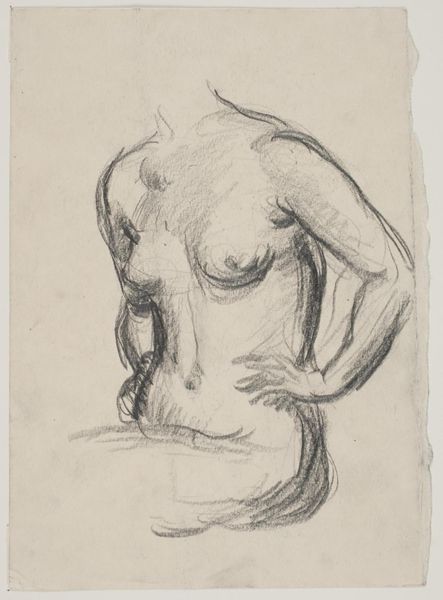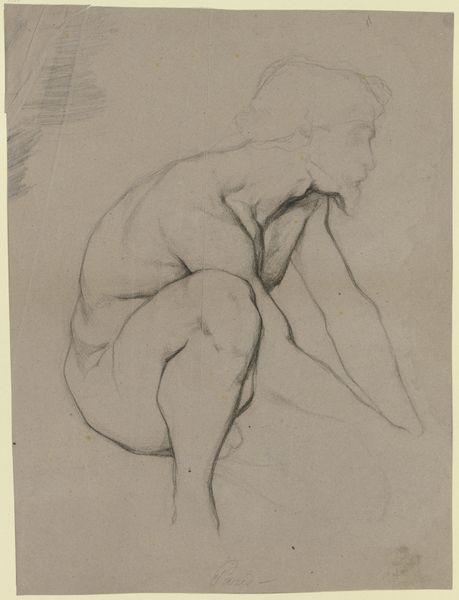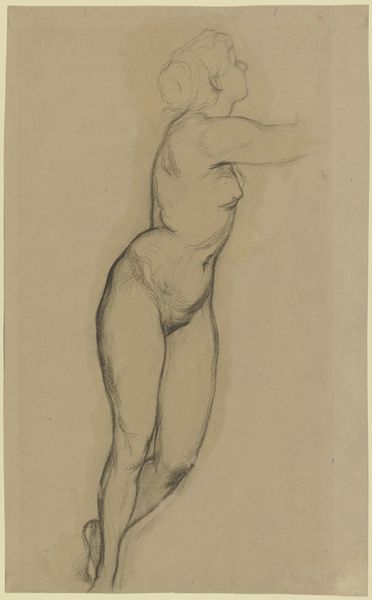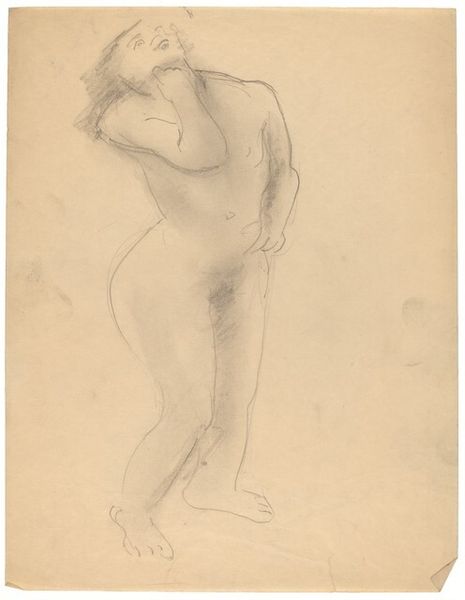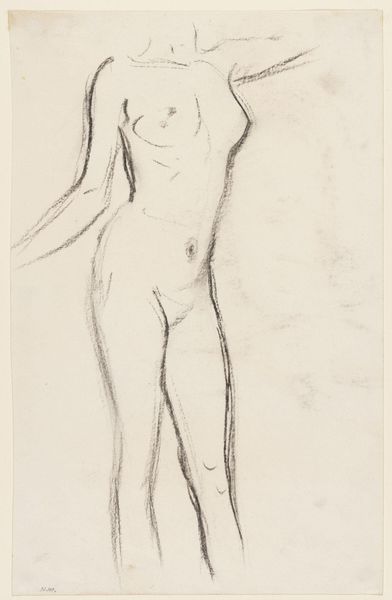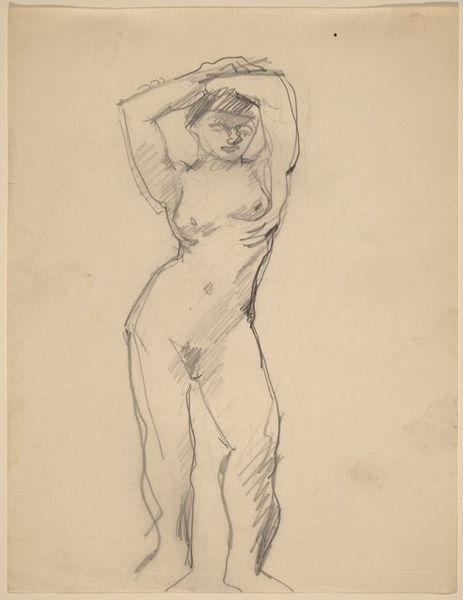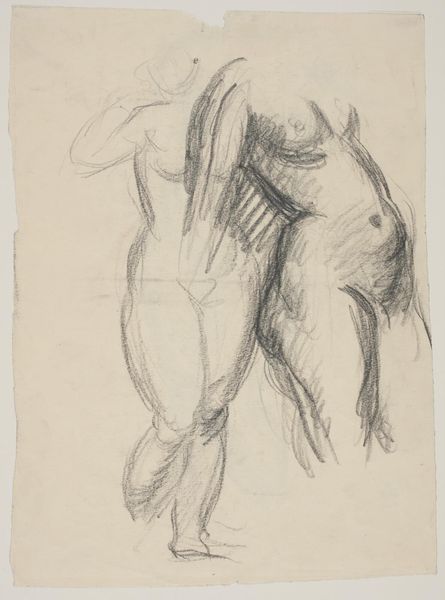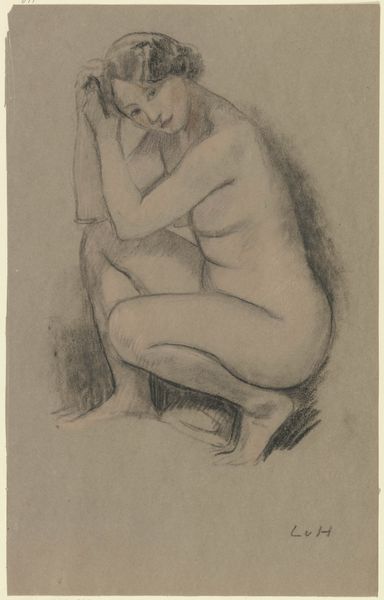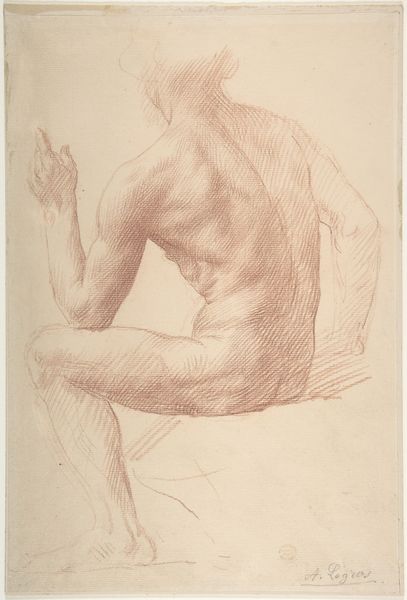
drawing, ink
#
portrait
#
drawing
#
ink drawing
#
figuration
#
ink
#
portrait drawing
#
nude
Dimensions: image (sight): 51.12 × 27.78 cm (20 1/8 × 10 15/16 in.)
Copyright: National Gallery of Art: CC0 1.0
Curator: Before us is "Nude Study," an ink drawing completed around 1900 by Augustus John. Editor: It has a restless quality. That rapid, sketchy ink work—it looks almost unfinished. You feel the hand of the artist right there. Curator: John was deeply immersed in representing figures, finding inspiration from diverse artistic traditions, and we see echoes of classical sculpture melded with an interest in contemporary, looser styles. Consider how the pose subtly evokes notions of contemplation. Editor: Yes, but let's consider the material reality. Ink on paper. It's inherently economical, portable. Sketches like this were often produced rapidly—a mode of visual thinking. Do you think this preparatory sketch allowed him freedom to experiment? It almost suggests the artist’s engagement with social reform, considering how cheap this medium can be. Curator: It's also an intriguing glimpse into beauty standards of the time. This is not the idealized, hyper-feminine form often depicted. It speaks more to a real human presence, capturing the subtle curves and shadows. Think of the symbolic power of the body as a vessel, of our very beings and experience reflected through form. Editor: I can't ignore how easily accessible and reproducible drawing is, compared to, say, a marble sculpture, it democratizes representation, even as it explores themes of the nude. We could think about how access informs a certain interpretation of the social context, like whether we would imagine John sketching it in a studio or a public park? Curator: An intriguing angle, and maybe we are also considering the act of seeing, of portraying the female form with vulnerability and without pretense, in doing so, invites reflection upon the subjective experience of embodiment itself. Editor: Seeing the gestural and tactile nature of the drawing, however, I wonder, how different would our reading of its cultural weight be, had the artist chosen to, say, draw on animal parchment rather than simple paper? How the history of such practices would influence our ideas and reactions... Curator: Certainly changes the lens. For me, gazing upon this work triggers questions of embodiment and symbolic transformation that art is so able to conjure and challenge us to recognize within ourselves. Editor: It is striking how the simple medium draws out all these fascinating perspectives across gender, class, time, and how a cheap artform like ink can contain them all.
Comments
No comments
Be the first to comment and join the conversation on the ultimate creative platform.
